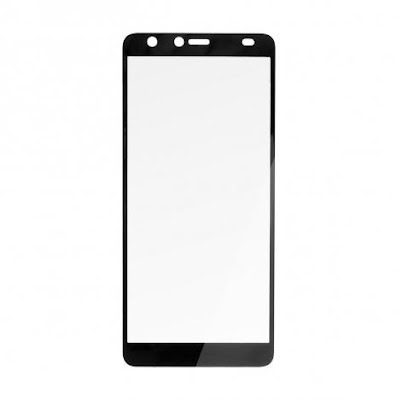Often times when you buy a cellphone, aka a smart phone in the current era, the aspects that are very much taken into consideration are the chipset, memory, battery, and camera. Sometimes the screen becomes a recurring aspect. Meanwhile, the screen is also a meaningful aspect to consider when buying a cellphone.
Why is the screen zone so significant? Because at this time, smart phones are not merely communication but like multimedia features. Surely you don't want to buy a cellphone with a bad screen, right? This is because many cellphones on the market use different types of screen panels.
On such a basis, you should now also think about the screen zone. Moreover, there are many cellphones that use various types of screens with all of their features. You can recognize the screen ratio used on a cellphone by recognizing the various types of cellphone screens below.
1. LCD
Talking about the screen on a smartphone, basically there will be a dialogue about the screen called LCD. LCD, which stands for liquid crystal display, is a basic type of screen that is widely used in various smart phones. As the name implies, this LCD is a screen consisting of a layer of liquid crystals that is illuminated from behind. The use of LCD was selected because the production material was not even so, many cellphone vendors introduced cellphones with LCD screens.
2. TFT LCD
TFT LCD is an LCD screen that uses TFT technology (Thin Film Transistor or Thin Film Transistor). This TFT screen is widely used in cheap smart phones, especially when smart phones are getting busy on the market.
3. Haptic Tactile
The next mobile screen technology is the Haptic Tactile Display. This screen technology was previously used by BlackBerry and Nokia, for example the BlackBerry Storm feature. This screen technology introduces a touch feature on the screen that can create feedback so as to improve screen touch accuracy and typing comfort. Unfortunately, this technology has been deprecated along with the surrender of BlackBerry in the mobile market.
4. Retina Display
Apple has a display technology called Retina Display. This designation is not a display technology like the AMOLED that Samsung brought up. Retina Display is Apple's marketing language for their iPhone products. Usually, some iPhone products wear IPS and OLED type screens. However, the quality of the IPS and OLED screens on the iPhone is better when compared to the screen of an Android phone with the same screen type.
5. Dynamic AMOLED
Samsung phones as well as some high-end phones from other vendors usually stick around with the Amazing AMOLED panel. Samsung wears this panel in the Samsung Galaxy S series as well as some other types of Samsung phones in the middle class. Dynamic AMOLED in for Android Authority doesn't just introduce a screen with a punchole. Dynamic AMOLED has expertise and features like AMOLED extraordinary. However, there is some increase in the appearance of such as greater contrast and reproduction of great quality tones.
6. Amazing AMOLED
Outstanding AMOLED technology development from AMOLED. This designation is used by Samsung as a marketing designation that refers to a better screen panel than AMOLED. Meanwhile technologically, Incredible AMOLED doesn't have a very significant technological upgrade.
AMOLED's Outstanding display performance is the same as AMOLED, so it consumes power. What distinguishes AMOLED and AMOLED extraordinary is the use of the touch screen panel. For those who don't know, usually the cellphone screen consists of a screen panel and a touch screen arrangement that is sometimes separate, be it an LCD, TFT, OLED or AMOLED panel.
7. AMOLED
AMOLED or Active Matrix Organic Light Emitting Diode is a screen technology developed by Samsung. This screen technology began to be widely used in 2008 in various features, including smart phones. Even though Samsung grew up, the AMOLED screen was first used by the Nokia C6-01 and Nokia 85 phones
8. OLED
Some types of cell phones appear to wear OLED panels, like the LG V30 which wears the P-OLED type OLED. OLED itself stands for Organic Light-emitting Diode. This type of screen is different from LCD technology. The OLED screen consists of thin electroluminescent layers which means the array can turn on when there is electricity. Because in this case, OLED can create its own light.
9. PLS TFT
The naming of the TFT on this type of screen makes people doubt the quality of this product. Meanwhile, PLS TFT is different from TFT LCD. PLS TFT is a type of screen that is similar to IPS LCD screen technology.
10. IPS LCD
Almost all the latest smart phones, both from the affordable and middle class, have introduced a screen with IPS LCD. There are also some types of high-end cellphones that still wear IPS LCD.
***
That is what can be conveyed. We apologize if there are deficiencies, errors in writing words. We apologize profusely. This article is useful? share this ok!




0 Comments